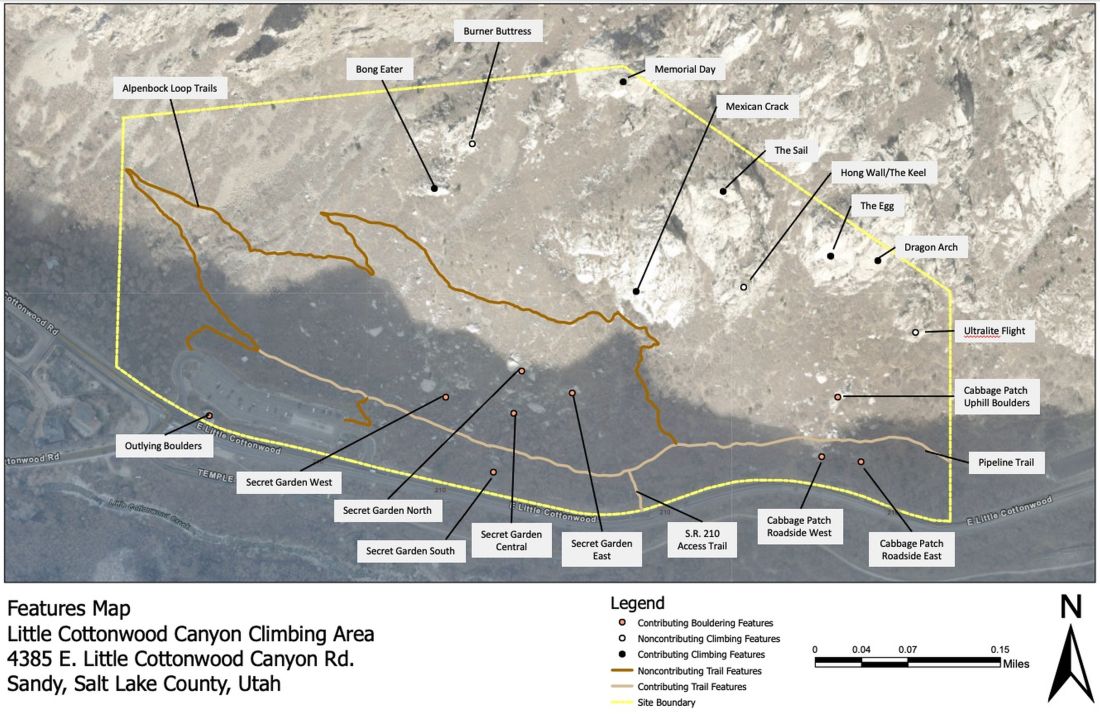The Little Cottonwood Climbing Area site holds statewide significance under Criterion A as an excellent representation of a culturally significant site in the areas of Recreation and Social History in Salt Lake County, Utah. Significance is on a statewide level due to the intensity of climbing development as a recreational sport within the site in a relatively short frame of time, and that one group was responsible for that development – the Alpenbock Climbing Club. While non-technical climbing was happening on occasion by individuals elsewhere in the state before and during the period of significance, it was not well-informed by national trends for technique, safety, and equipment as it was by the Alpenbock Climbing Club during their time pioneering routes in the area and serving as the county’s first mountain search and rescue unit. The period of significance is 1962-1974, which encompasses the time period when Alpenbock Climbing Club members Ted Wilson and Larry Love established the first recorded climbing route in the site through to the time when route and technical climbing knowledge was passed person-to-person rather than through guidebooks and capturing the rise of the Leave No Trace movement in climbing, embraced and promoted by the Alpenbock Climbing Club, and winter/ice climbing led by George Lowe. In the Area of Entertainment/Recreation, the site is significant for its contributions to the pattern of early rock climbing and development of “classic” climbing routes, pioneering of hard-rock climbing technology and building local enthusiasm for climbing as an outdoors activity. The distinctive granite formations within the site remain unchanged since 1962 and share an interrelationship within a relatively small geographic area. In the Area of Social History, the site is significant for its association with the local Alpenbock Climbing Club and with individuals whose activities were critical in building the Utah climbing community and connecting with the national climbing community through recognized figures such as Yvon Chouinard, Royal Robbins, Fred Beckey, and Layton Kor. These national figures helped give legitimacy to climbing in this area of Little Cottonwood Canyon, the Alpenbock Climbing Club as an entity, and helped spread international climbing culture. Notable locals were highly proficient, internationally experienced climbers, working search and rescue locally and in the Grand Tetons throughout the 1960s. The site’s climbing culture is based on the somewhat intangible values of feelings and personal association, but there is almost no other way to judge or weigh the merit of historical or cultural values in a naturally-occurring climbing area. All of the resources within the site retain a high degree of historic integrity in all seven aspects.
